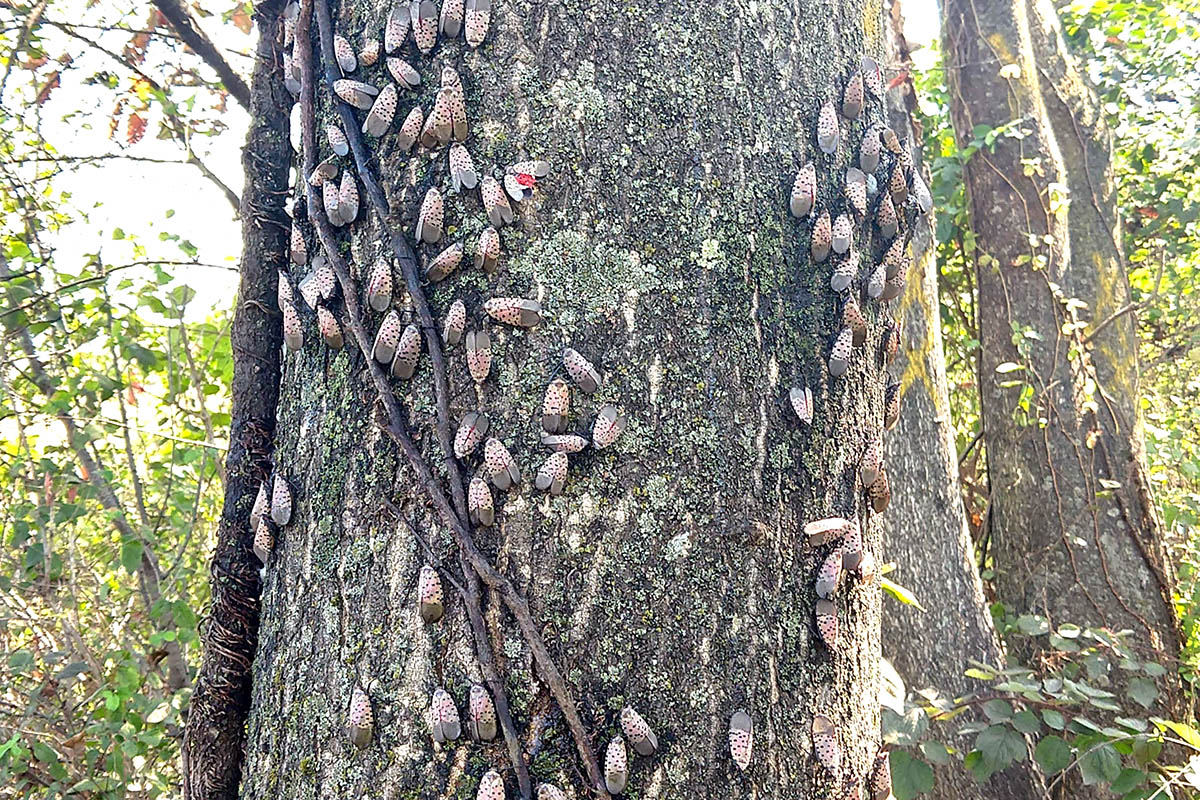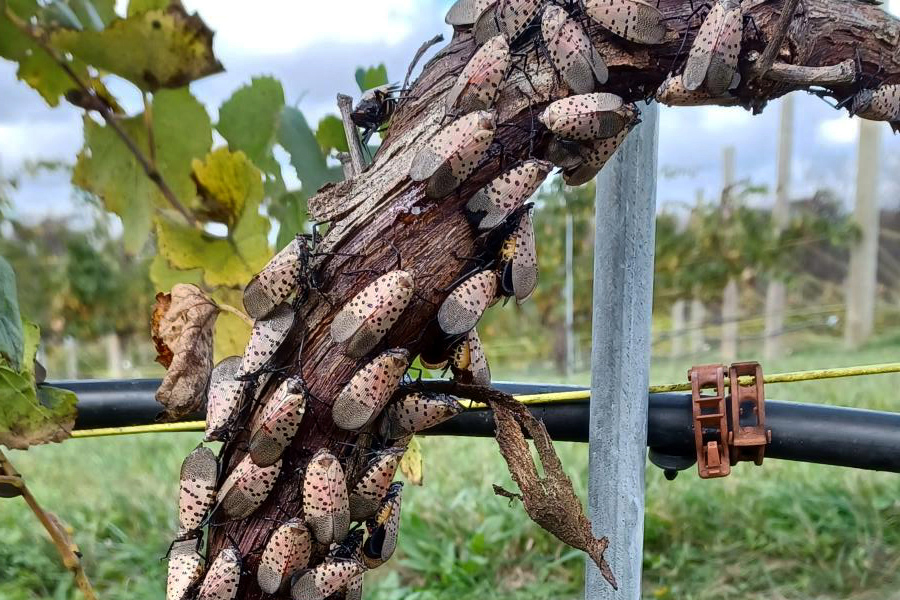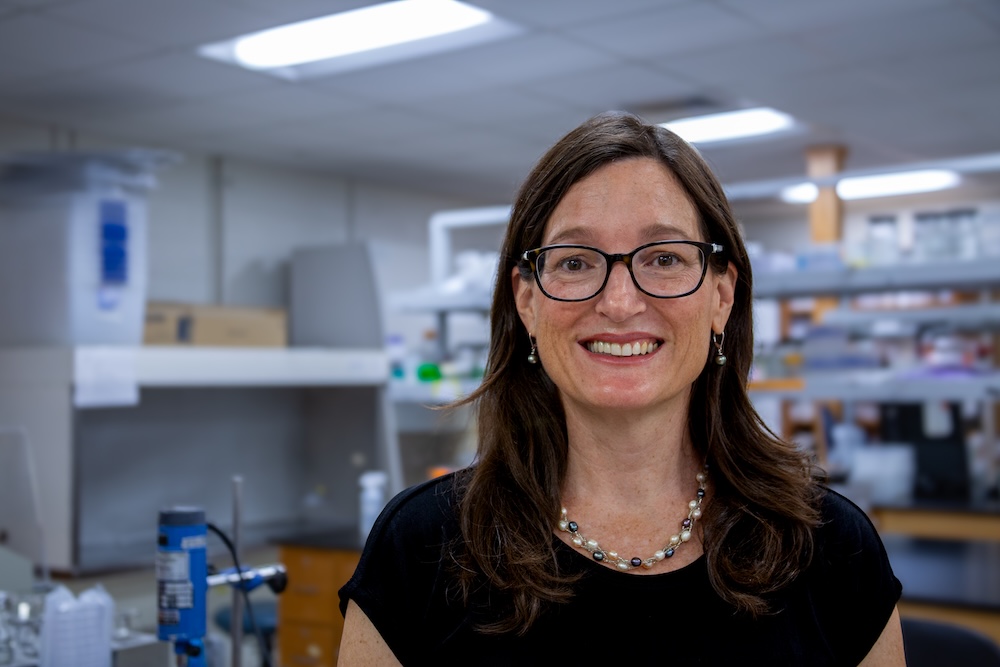
The spotted lanternfly (Lycorma delicatula), an invasive insect pest that first arrived in Pennsylvania in 2014 and has since spread to 16 additional states in the Eastern U.S., has state governments urging residents to be on the lookout and to use caution when moving firewood.
The insect’s preference for feeding on the tree of heaven (Ailanthus altissima) — another invasive species — has led to significant pest reservoirs, affecting vineyards and other agricultural sectors, including hardwoods and other ornamental and fruiting trees.
The University of Georgia College of Agricultural and Environmental Sciences (CAES) is taking the lead in the human dimensions aspect of a multi-institutional, multimillion-dollar project aimed at managing these invasive species.
“Our goal is to suppress populations of both invasive species, enhance ecosystem health, reduce insecticide use and mitigate yield losses,” said Alexa Lamm, professor in the CAES Department of Agricultural Leadership, Education and Communication. “This project represents a significant step forward in sustainable pest management and environmental conservation.”
Managing a dual threat to agriculture
Tree of heaven, introduced to the U.S. in the late 1700s, has become widespread, thriving in poor soil and disturbed areas. This invasive tree supports the survivorship and development of the spotted lanternfly.
The invasive insect prefers tree of heaven as a season-long feeding host and is often present in extremely high densities on trunks, leading to a large pest reservoir in unmanaged habitats. This intense feeding can lead to reduced tree vigor, which causes the spotted lanternfly to disperse from the tree of heaven into other agricultural crops.
Spotted lanternfly dispersal into vineyards alone has resulted in increased insecticide inputs, reduced yields and increased winter injury.
Because of the close insect-plant relationship between these species, the research team set out to develop methods of managing both invasives simultaneously across the landscape using compatible biological control agents.
The five-year, $2.9 million project is led by Tracy Leskey, director and research leader at the USDA-ARS Appalachian Fruit Research Station, and Lamm is leading UGA’s involvement in the grant. Virginia Tech, Rutgers University and the University of Minnesota are also partners.
Finding new control solutions for spotted lanternfly

The project aims to deliver Verticillium nonalfalfae, a soilborne plant pathogen that attacks only plants, not humans or other organisms, to tree of heaven under field conditions and document its spread by the spotted lanternfly. The team will also use commercially available entomopathogens — a biocontrol method used to disable insect pests — to suppress spotted lanternfly in the field.
Researchers will conduct field-based evaluations of complementary biological control agents against tree of heaven and spotted lanternfly at an areawide scale.
Lamm, who is recognized for her work toward understanding how communication impacts the adoption of new scientific technologies to advance sustainable agricultural production, will partner with an applied economist to work directly with producers wrestling with tree of heaven and spotted lanternfly. The team aims to overcome barriers to adoption by communicating the benefits of the areawide program and explaining how it will generate economic return.
Lamm will hold focus groups with regulators, landowners, vineyard owners and managers to discuss challenges, current practices and barriers to the adoption of new integrative pest management (IPM) strategies. The findings will help the research team find solutions to overcome these challenges. Lamm will hold annual listening sessions to determine whether the new IPM strategies are working for producers and to bring associated challenges back to the team so research and extension programs can be adjusted accordingly.
“I am thrilled to work with a highly talented, diverse interdisciplinary team that is committed to taking stakeholders’ perspectives into account as they strive to conduct research and develop new integrated pest management strategies that are not only effective, but will actually work on-farm, because they have taken the needs of producers into account,” Lamm said. “I am very excited to work closely with farmers as we strive to solve one of their most pressing pest problems.”
For more information on the project, contact Alexa Lamm at alamm@uga.edu. To learn more about the invasion of the spotted lanternfly and how to report sightings, visit newswire.caes.uga.edu.






